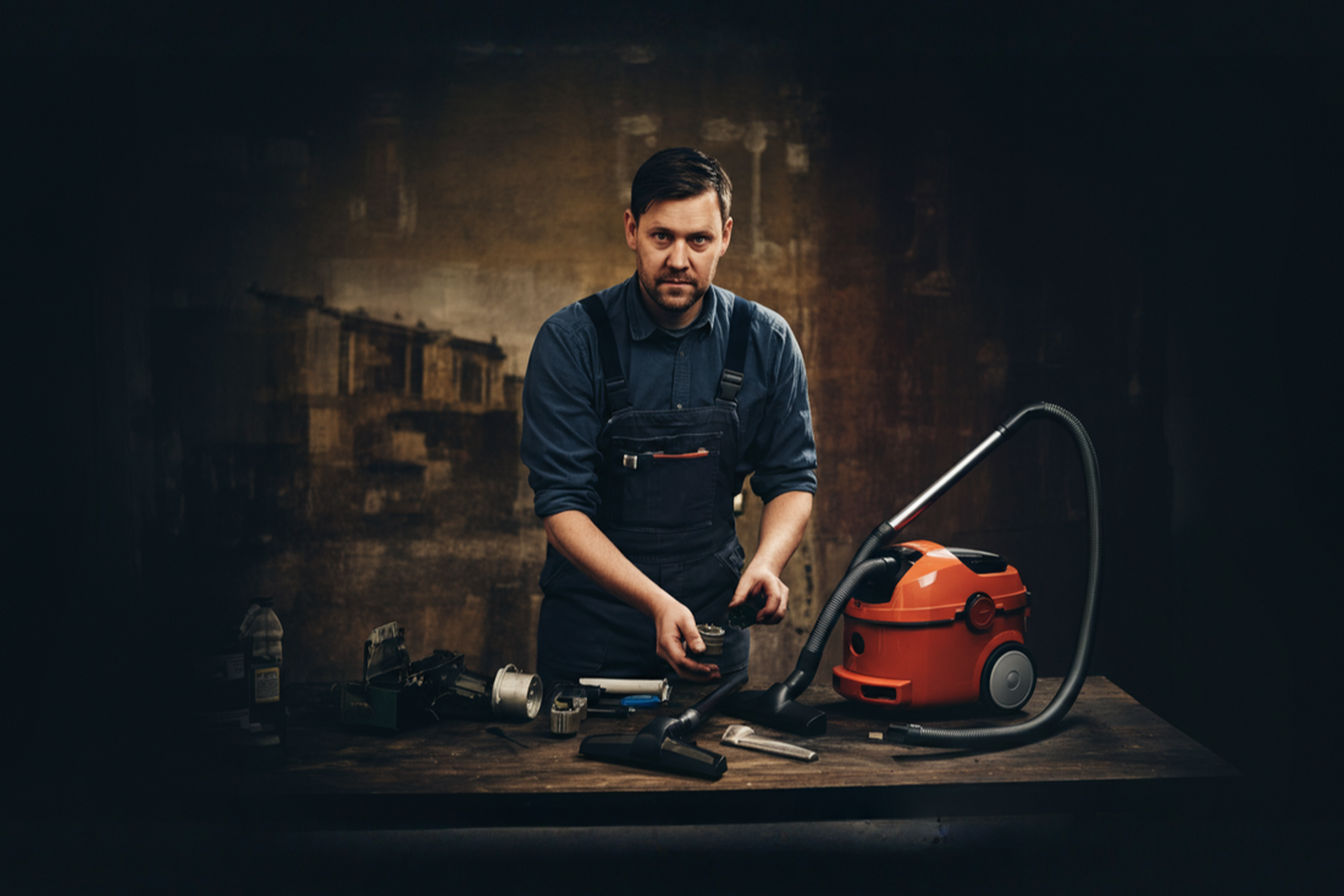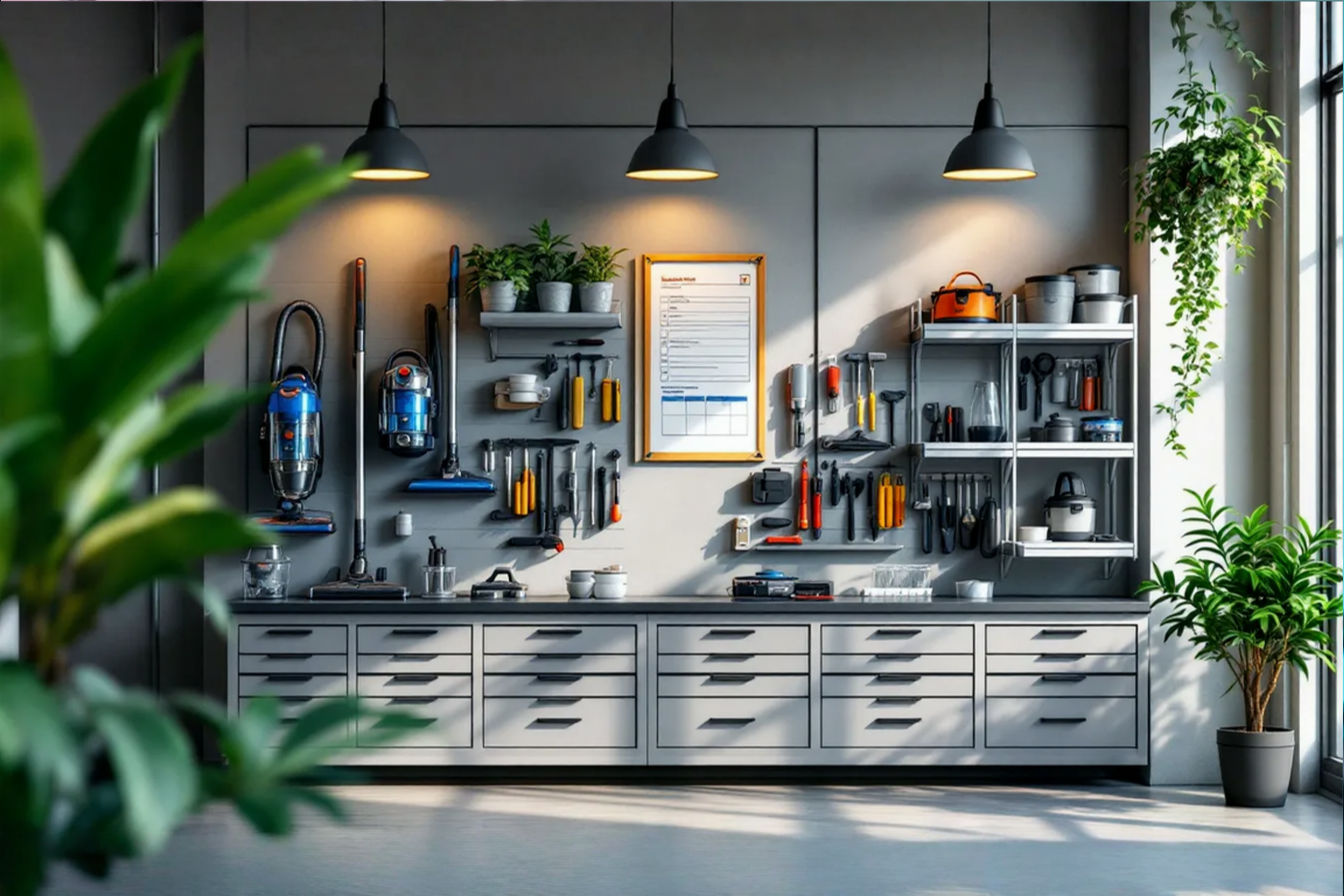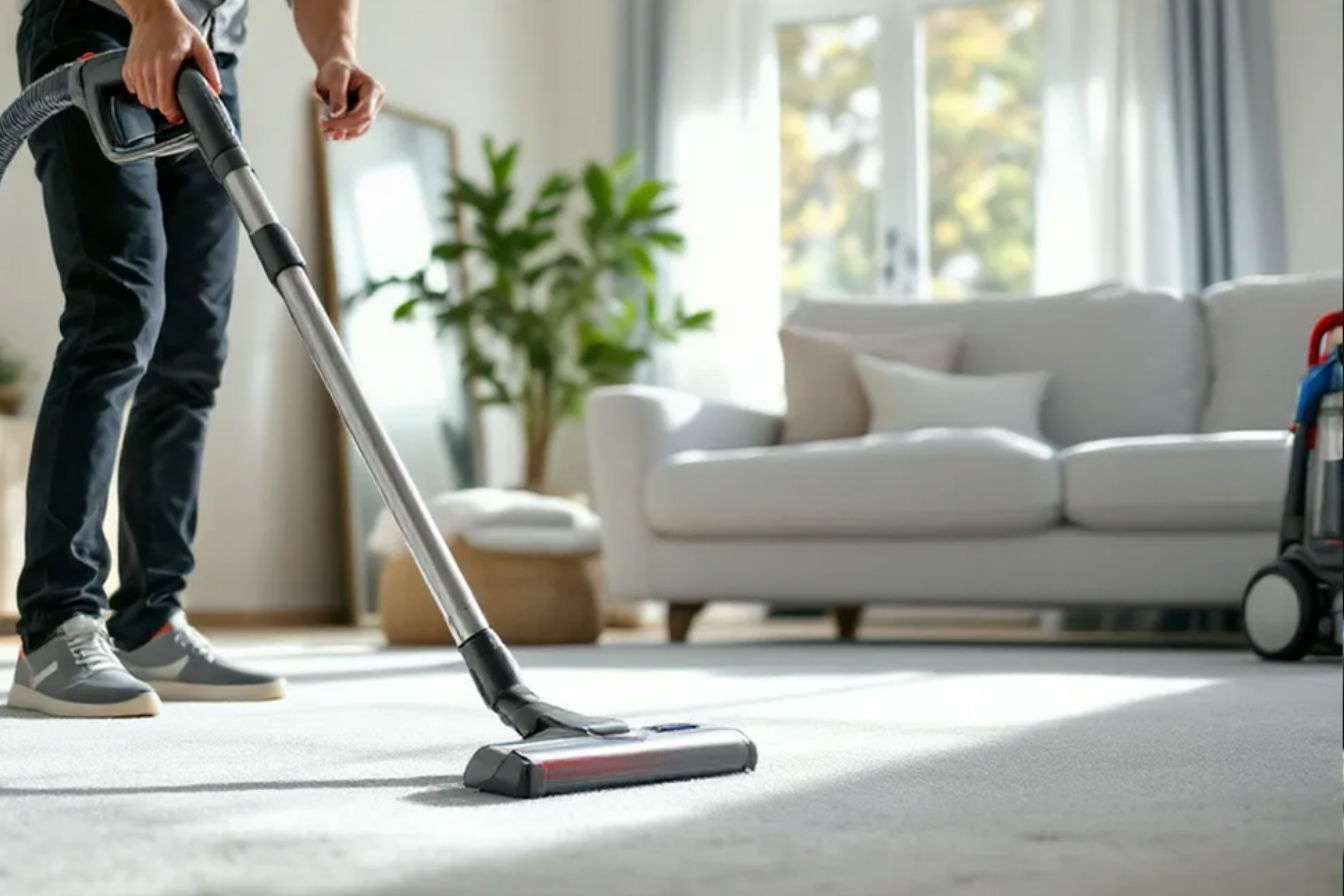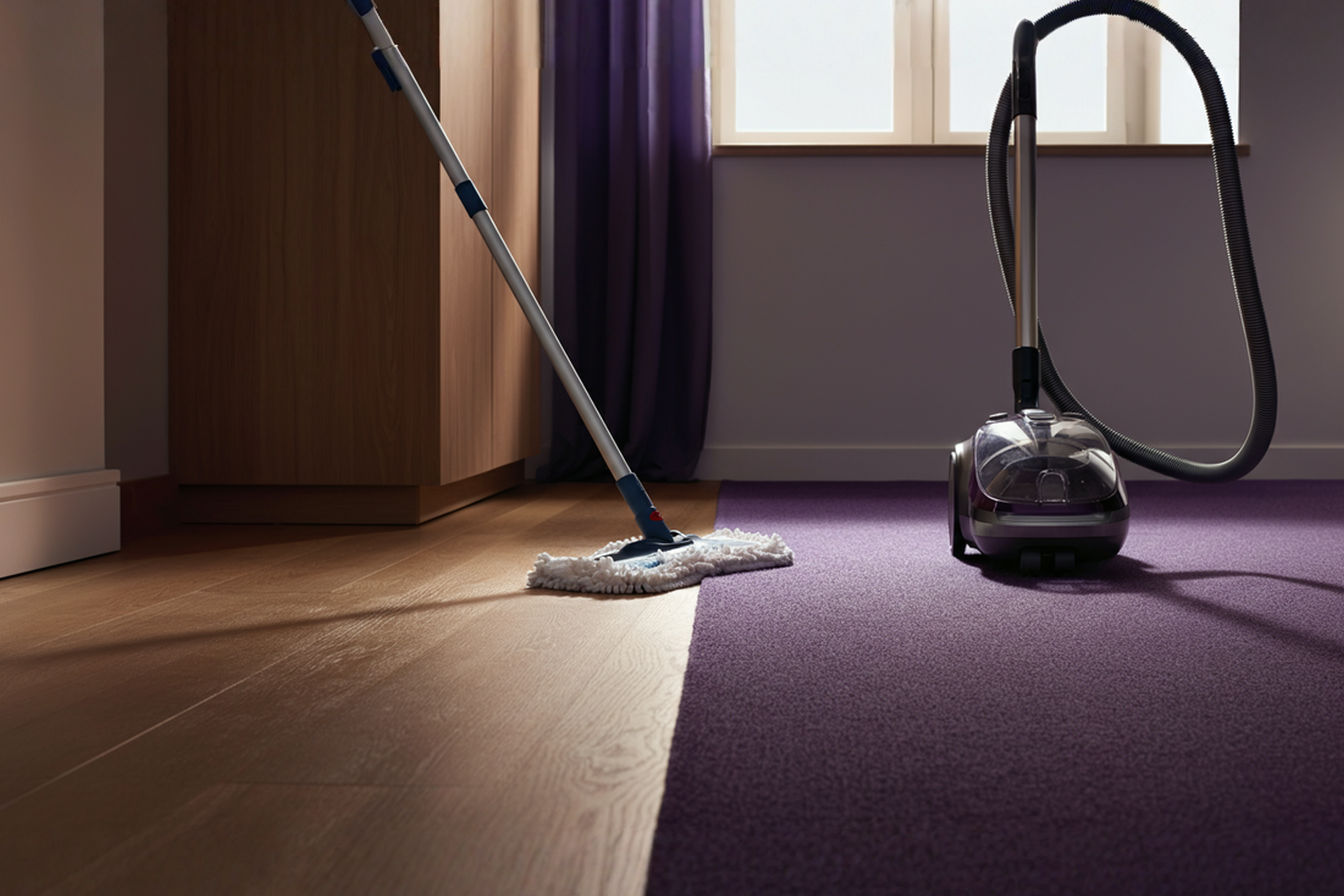Replacement Part Sources: The Ultimate Guide to Extending Product Life Through Repair
Tired of throwing away fixable items? Learn how to source quality replacement parts, develop repair skills, and save money while reducing environmental impact.
This post may contain affiliate links. If you make a purchase through these links, we may earn a commission at no additional cost to you.
In an era dominated by new products and convenient replacements, the art of repair has taken a backseat. Yet, this forgotten practice offers numerous advantages—from substantial cost savings to meaningful environmental benefits. This comprehensive guide explores how sourcing the right replacement parts can transform your approach to product ownership, helping you extend the lifespan of your possessions rather than succumbing to the cycle of constant replacement.
Why Repair Rather Than Replace?
The decision to repair instead of replace goes beyond simple economics, though the financial benefits can be significant. When you repair an item, you often spend a fraction of what a new purchase would cost. This approach becomes particularly valuable for high-quality goods that were designed to last decades but may experience isolated component failures.
Environmental consciousness drives many repair decisions in our increasingly sustainability-focused world. Manufacturing new products requires raw materials, energy, and transportation—all of which contribute to carbon emissions and resource depletion. Each repair prevents another item from entering the waste stream and reduces the demand for new production.
Many possessions carry emotional significance that cannot be replaced. Family heirlooms, vintage items, and cherished gifts often hold value that transcends their functional purpose. Repairing these items preserves their history and maintains their special place in your life.
Beyond the immediate benefits, developing repair skills fosters self-reliance and practical knowledge. The satisfaction of successfully fixing something creates a deeper connection to your possessions and builds confidence for tackling more complex projects. This repair mindset represents a fundamental shift away from disposable consumption toward thoughtful ownership.
Understanding Replacement Parts
Navigating the world of replacement parts begins with understanding the different categories available:
OEM (Original Equipment Manufacturer) parts come directly from the same company that made your product or were produced by authorized partners to the exact specifications of the original. These parts typically offer perfect compatibility and consistent quality, though they often come with premium pricing.
Aftermarket parts are produced by third-party manufacturers not affiliated with the original product maker. They range widely in quality—from superior components that improve upon the original design to inferior knockoffs that may compromise performance. Their primary advantage lies in greater selection and typically lower cost than OEM alternatives.
Refurbished parts have been previously used, then professionally restored to working condition. The refurbishment process usually involves cleaning, testing, and replacing any worn components. These parts offer a middle ground between new and used, often with warranties that provide additional peace of mind.
Used parts sourced from salvaged products represent the most affordable option, though they come with inherent risks regarding remaining lifespan. The quality varies tremendously based on the donor product’s age and condition, making careful inspection essential.
Universal replacements are designed to function across multiple product makes and models. While convenient, these parts sometimes require modifications or adaptations to work properly with your specific item. Their versatility makes them valuable for common components like filters, belts, or fasteners.
How to Identify the Part You Need
Accurate part identification forms the foundation of successful repairs. Start by consulting your product’s manual, which typically includes exploded diagrams, part numbers, and assembly instructions. Many manufacturers now make these documents available online if you’ve misplaced the original.
The model number of your product serves as the key to finding compatible parts. This identifier is typically found on a label, plate, or sticker on the product itself—often in less visible areas like the back, bottom, or inside compartments. Documenting this information before beginning your search saves considerable time.
For visual identification, carefully examine the failed component, noting distinctive features, connection types, dimensions, and any printed information. Photographs from multiple angles provide valuable reference during your search and can help parts specialists assist with identification.
Online resources have revolutionized part identification. Websites like PartSelect, eSpares, and manufacturer databases allow you to search by model number and view exploded diagrams where you can pinpoint specific components. Many sites include helpful filters to narrow options based on symptoms or component categories.
When dealing with complex systems or ambiguous failures, professional diagnostics may become necessary. Repair technicians can perform tests to isolate the exact component causing the problem, preventing wasted expenditure on unnecessary parts.
Primary Sources for Replacement Parts
The source you choose for replacement parts significantly impacts quality, cost, and convenience:
Manufacturer direct purchasing provides the highest assurance of compatibility and quality. Many companies maintain parts departments accessible through their websites or customer service centers. While typically more expensive, these parts often include warranties and represent the safest choice for critical components.
Authorized dealers and service centers maintain inventories of common replacement parts for the brands they represent. These businesses offer the advantage of local availability and staff expertise to help confirm compatibility. Their pricing usually falls between direct manufacturer and third-party options.
Third-party online marketplaces have transformed parts accessibility. Sites like Amazon, eBay, and specialized platforms such as Repair Clinic aggregate offerings from multiple suppliers. These marketplaces excel at competitive pricing and availability but require careful attention to seller ratings and return policies.
Specialty repair shops focused on particular product categories often stock components for popular models. Their expertise provides valuable guidance for complex repairs, and many offer both parts and installation services. Building relationships with these businesses can lead to insider knowledge about reliable alternatives when original parts become unavailable.
Salvage and recycling centers present opportunities for finding parts from otherwise discarded products. These sources prove particularly valuable for discontinued or vintage items. The treasure-hunt nature of salvage requires patience and flexibility but can yield remarkable savings.
The emerging field of 3D printing opens new possibilities for replacement parts, especially for plastic components that are no longer manufactured. Online platforms like Thingiverse host thousands of user-created designs for common replacement parts, while local makerspaces can help produce custom solutions.
Evaluating Parts Quality and Compatibility
Not all replacement parts deliver equal performance, making evaluation crucial:
Understanding manufacturer specifications helps establish quality benchmarks. Compare material composition, dimensions, and performance ratings between original and replacement options. Reputable sellers provide detailed specifications that align closely with OEM standards.
Reviews and reputation research reveal real-world performance. Previous buyers often document their experience with specific parts, highlighting any compatibility issues or quality concerns. Pay particular attention to reviews from people using the same model you own.
While price often correlates with quality, this relationship isn’t absolute. Some premium-priced parts offer no functional advantage over more affordable alternatives, while suspiciously cheap options may indicate substandard materials or manufacturing. Research helps distinguish value from both overpricing and false economy.
Physical inspection provides valuable quality indicators. Examine machining precision, material consistency, and finish quality. Compare the replacement directly with the original part when possible, noting any differences in weight, flexibility, or connection points.
Before purchase, verify the seller’s return policy and any warranties offered. Quality parts typically come with confidence-inspiring guarantees, while questionable suppliers often impose restrictive return conditions. This protection becomes especially important for expensive components or those with complex installation requirements.
Tools and Resources for Successful Repairs
Proper tools dramatically improve repair outcomes:
An essential repair toolkit includes precision screwdrivers, pliers, multimeters for electronics, and specialized tools for specific industries. Investing in quality tools pays dividends through improved results and reduced frustration. Start with versatile basics and expand your collection as you tackle more diverse repairs.
Repair documentation provides critical guidance. Service manuals detail disassembly procedures, troubleshooting steps, and reassembly techniques. While manufacturers once restricted these documents, right-to-repair progress has improved accessibility. Websites like iFixit and ManualsLib archive thousands of product manuals.
Online communities connect you with experienced repairers facing similar challenges. Forums, subreddits, and social media groups dedicated to specific brands or product categories offer invaluable troubleshooting advice and moral support. These communities frequently identify common failure points and develop innovative repair approaches.
Mobile apps bring repair guidance directly to your workspace. Applications like RepairWiki, Fixperts, and manufacturer-specific tools provide interactive assistance, helping identify parts and visualize repair procedures. Many include inventory systems to track your spare parts collection.
For repairs beyond your comfort level, professional services provide a safety net. Establishing relationships with trustworthy repair professionals helps you make informed decisions about which projects to attempt yourself and which to delegate. Many professionals offer consultation services to guide your DIY efforts.
Common Product Categories and Their Repair Considerations
Different product categories present unique repair challenges:
Home appliances typically feature modular designs conducive to component replacement. Large appliances like refrigerators, washers, and dishwashers often use standardized parts that remain available for many years. Their mechanical nature makes visual diagnosis relatively straightforward, though modern appliances increasingly incorporate electronic control systems requiring specialized testing.
Consumer electronics present greater complexity due to miniaturization and integrated components. Smartphones, computers, and entertainment systems often require precise tools and steady hands. While some components like batteries, screens, and storage devices follow standardized designs, many parts are device-specific. Manufacturer resistance to independent repair remains strongest in this category.
Vehicles combine accessibility challenges with broad parts availability. The automotive aftermarket offers extensive options ranging from budget to premium for most makes and models. Older vehicles may require hunting through salvage yards or specialty suppliers. Online communities dedicated to specific vehicle models provide invaluable guidance for identifying compatible alternatives when original parts become unavailable.
Furniture and home goods repairs focus primarily on mechanical connections, fabric replacement, and surface restoration. The craftsmanship approach to these repairs emphasizes matching materials and maintaining aesthetic integrity. Specialized hardware suppliers cater to furniture restoration, while fabric stores provide materials for upholstery projects.
Clothing and textiles represent perhaps the oldest repair tradition. Simple mending skills extend garment life considerably, while more advanced techniques can rejuvenate worn items. The slow fashion movement has revitalized interest in clothing repair, supported by online tutorials and community skill-sharing events.
Tools and equipment repairs require understanding of both mechanical and electrical systems. Commercial-grade tools often feature replaceable components designed for field service, while consumer models may present more challenges. Industry-specific forums help identify compatible alternatives when exact matches become unavailable.
Overcoming Common Repair Challenges
Even the most dedicated repairer faces obstacles:
Discontinued parts present perhaps the greatest challenge. When manufacturers cease production of specific components, alternatives include: adapting similar parts with modifications, finding new old stock from warehouse liquidations, exploring 3D printing options, or salvaging from identical donor units. Online communities often develop creative solutions for commonly discontinued parts.
Complex repairs requiring specialized knowledge benefit from incremental approaches. Breaking the process into documented stages prevents overwhelming complexity. Creating photographic records during disassembly ensures correct reassembly. When necessary, consulting with professionals before beginning helps identify potential pitfalls.
Warranty considerations affect repair decisions for newer items. While some manufacturers void warranties for any unauthorized repair, recent right-to-repair legislation has begun restricting this practice. Review warranty terms carefully before proceeding with independent repairs on covered products. Some manufacturers will honor warranties for unrelated failures even after component replacement.
The repair-or-replace calculation involves multiple factors beyond immediate cost. Consider the expected remaining lifespan of the product, availability of other parts likely to fail soon, energy efficiency improvements in newer models, and the environmental impact of replacement. This holistic evaluation prevents investing in repairs for products nearing the end of their practical life.
Effective parts storage systems prevent future frustration. Label components clearly with product information and purchase dates. Store sensitive electronics in anti-static packaging and protect mechanical parts from corrosion. Organizing spares by product category or component type simplifies retrieval when needed.
The Future of Repair Culture
The repair landscape continues to evolve in promising directions:
The right-to-repair movement has gained significant momentum, resulting in legislation requiring manufacturers to provide documentation, tools, and parts to independent repair providers and consumers. These policies reduce repair barriers and improve parts availability across product categories.
Emerging technologies support repair efforts through improved diagnostics, parts fabrication, and knowledge sharing. Augmented reality applications guide complex procedures, while advances in materials science create more durable replacement components. Online marketplaces connect those needing repairs with skilled providers in their communities.
Community repair initiatives like Repair Cafés and fixit clinics combine skill-sharing with practical assistance. These gatherings bring together volunteers with repair expertise and community members seeking help with broken items. Beyond practical repair, they build social connections and transfer valuable knowledge across generations.
Manufacturer repair programs have expanded as companies recognize consumer demand for sustainability. Some progressive manufacturers now offer modular designs, publicly available service documentation, and long-term parts availability commitments. These practices represent a potential shift away from planned obsolescence toward more sustainable product lifecycles.
The broader sustainability movement continues to elevate repair as an environmental priority. As consumers increasingly consider ecological impact in purchasing decisions, manufacturers face pressure to design for repairability and longevity. This shift promises to improve parts availability and product serviceability across industries.
Conclusion
The journey toward repair rather than replacement represents a meaningful shift in our relationship with material possessions. By sourcing quality replacement parts and developing repair skills, you contribute to a more sustainable future while enjoying significant personal benefits.
The financial advantages alone make a compelling case for repair, but the deeper satisfaction comes from extending the useful life of products that might otherwise be discarded. Each successful repair builds confidence and capability, connecting you to a growing community of people rejecting throwaway culture.
As you encounter items in need of maintenance, consider the resources outlined in this guide. Explore repair options before automatically reaching for replacements. With the right parts, tools, and knowledge, you might be surprised by what can be restored to full functionality.
The choice to repair represents a small but significant act of resistance against wasteful consumption patterns. By embracing this mindset, you help preserve resources, reduce waste, and build a more sustainable relationship with the things you own. The growing availability of replacement parts and repair resources makes this choice increasingly practical for consumers at all skill levels.
Take the first step on your repair journey today. That broken item sitting in your closet or garage might be just one replacement part away from many more years of useful service.







